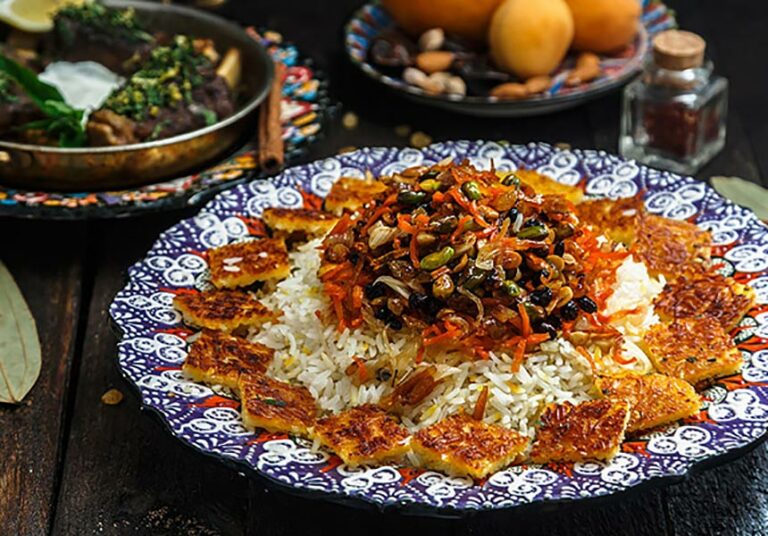Introduction: Iranian Cuisine
Iranian cuisine is known for its rich history, diverse flavors, and unique cooking techniques. With a long history that dates back to the ancient Persians, Iranian cuisine has evolved over time and incorporates influences from various regions and cultures. From traditional rice dishes to succulent kebabs and flavorful stews, Iranian cuisine has something to offer for everyone.
The Persian Empire: Influences on Iranian Cuisine
The Persian Empire, which spanned from 550 BCE to 330 BCE, had a significant impact on Iranian cuisine. During this period, trade routes were established, and the exchange of goods and ideas occurred. The Persians introduced new ingredients and cooking methods, such as saffron, pomegranate, and the tandoor oven, which are still used in Iranian cuisine today.
The Persians also placed great importance on hospitality and the presentation of food. This is reflected in traditional Iranian feasts, where guests are welcomed with a spread of various dishes, including rice, stews, and kebabs.
Ingredients and Spices Used in Iranian Cuisine
Iranian cuisine is known for its aromatic and bold flavors, which are achieved through the use of various herbs and spices. Saffron, a luxurious spice that is expensive but worth the price, is commonly used in dishes such as rice and stews. Other popular spices include cinnamon, turmeric, coriander, and cumin.
In addition to spices, Iranian cuisine also incorporates a variety of fruits and vegetables, such as eggplant, tomatoes, and pomegranate. Fresh herbs such as mint, parsley, and cilantro are also commonly used to add flavor and freshness to dishes.
Traditional Persian Dishes in Iranian Cuisine
Iranian cuisine is steeped in tradition, and many of the dishes have been passed down from generation to generation. One such dish is chelo kebab, a combination of saffron rice and grilled meat, often served with grilled tomatoes and onions. Another traditional dish is gheymeh, a stew made with lamb or beef, split peas, and dried limes.
Iranian cuisine also has a variety of vegetarian dishes, such as kuku sabzi, an herb and egg dish, and mirza ghasemi, a smoky eggplant dish. Desserts such as shirini berenji, a rice flour cookie, and halva, a sweet sesame paste, are also popular.
Modern Iranian Cuisine and International Influences
In recent years, Iranian cuisine has been influenced by international flavors, and new dishes have emerged. For example, fusion dishes such as sushi rolls filled with Persian ingredients, such as salmon and saffron, have become popular in Iran.
Additionally, Iranian chefs are experimenting with new techniques and presentation styles, such as molecular gastronomy, to create contemporary Iranian dishes that are both delicious and visually stunning.
Conclusion: Tracing Persian Influences in Iranian Cuisine
Iranian cuisine is a reflection of the country’s rich history and diverse culture. While it has been influenced by various regions and cultures, Persian influences are evident in the ingredients used, cooking techniques, and traditional dishes. Whether it’s a classic chelo kebab or a modern fusion dish, Iranian cuisine continues to evolve and delight food lovers around the world.

